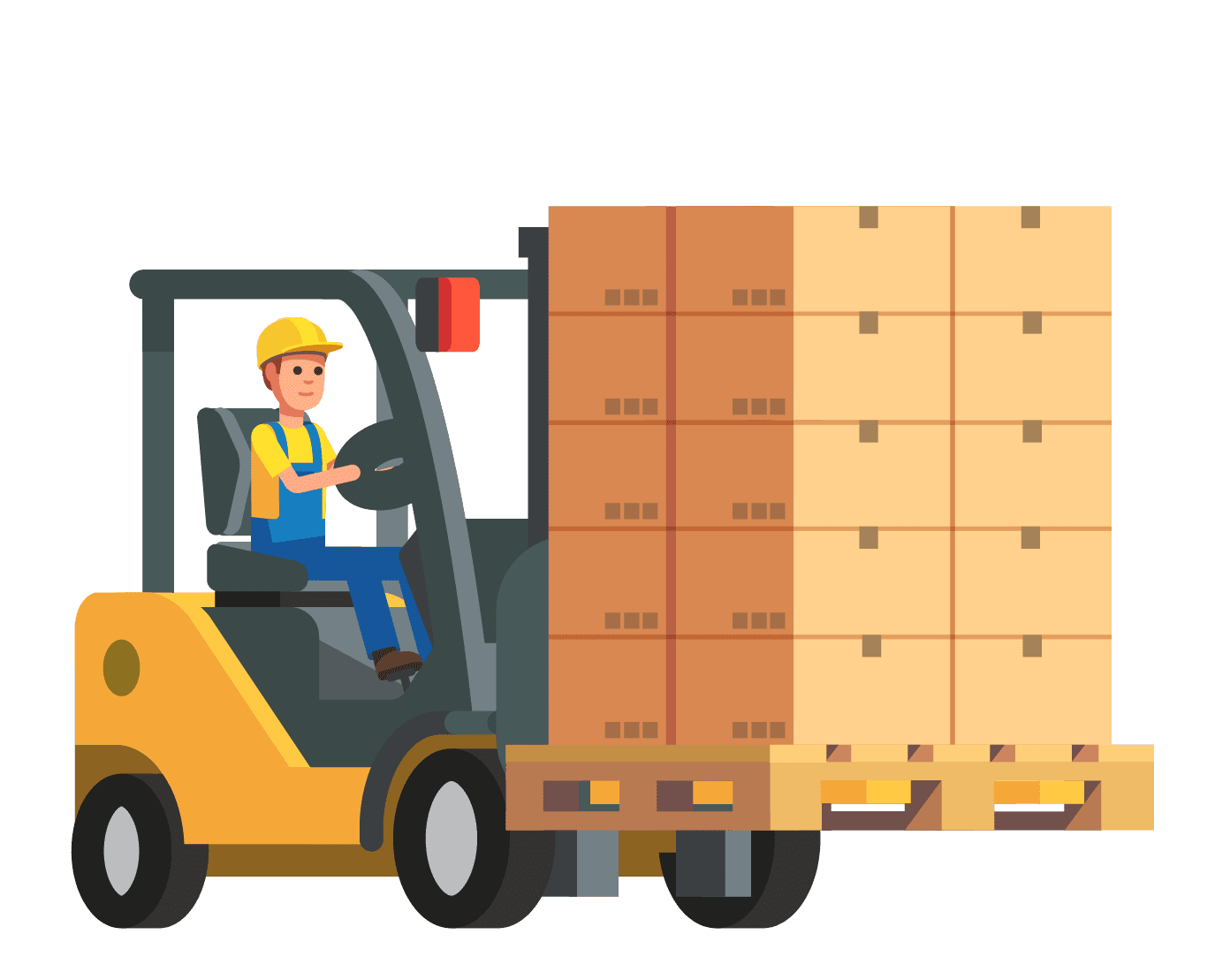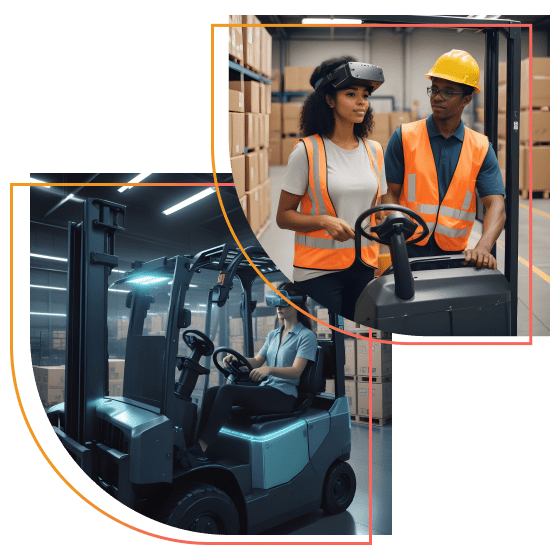Overview

One of our clients required PIT training, integrating VR for realistic, OSHA-compliant instruction. Travancore Analytics had to develop a VR solution that balances cost-effectiveness, safety, and multigenerational usability. One major challenge was to address the motion sickness while meeting the need for user access control and hardware integration.
- VR and web-based technologies are used in our realistic forklift training solution, which offers a user-friendly interface and secure distribution.
- The Replay system offers multi-angle viewing and 360-degree camera rotation, compatible with HTC VIVE Pro 2.
- Immersive VR forklift training is created with various training modules with different difficulty levels and functionality.
Case
Virtual Reality (VR), one of the branches of Extended Reality (XR) has become increasingly popular in training and education, because of its ability to provide immersive, interactive, and engaging simulations that mimic real-life situations. VR enables learners to practice in a safe and controlled environment that mirrors the real world. This allows them to learn from their mistakes without any real-world consequences. It is highly engaging and immersive, which helps learners retain information better. Users are more likely to remember what they learned and apply it in real-life situations. VR training can be cost-effective compared to traditional training methods. For example, in industries like aviation or medicine, training on real equipment can be expensive and risky, whereas VR training can simulate those scenarios without the associated costs and risks. VR training can be easily scaled to meet the needs of a large number of learners, regardless of their location. This makes it ideal for organizations with a geographically dispersed workforce. VR training can be customized to meet the specific needs of learners. For example, simulations can be created to address the needs of different industries, job roles, or learning styles.
From 2005 onwards, our client has been at the forefront of training people in Powered Industrial Trucks (PITs). They do both OSHA-compliant training and issue OSHA certifications. They understood that it was time to step up their game, and incorporating Virtual Reality into their training was the next evolution. They needed a solution that would enable their users to learn the dos and don’ts of forklift driving in a fairly realistic warehouse setting.
Challenges
The brain retains more information from real-life experiences. The millennial generation requires training that captivates and teaches in a more visual manner. So, our client needed a solution that is captivating for Gen Z while being user-friendly and adaptive for Gen Y to the boomers. Also, when it comes to PITs training, safety is of the utmost importance followed by cost. Binding these needs with Virtual Reality brings challenges too. The application must be user-friendly for millennials to boomers while still accommodating the high complexities that are required to bring real-life training experience.One of the big challenges that we face with motion-based VR applications is the motion sickness felt by the users. The same was a major concern for the clients. The client also required an option to register the output of the various training modules, the ability to control access for different types of users, and much more. Also, in order to simulate the controls of forklifts, we also need to accommodate the extra hardware and make a concrete communication between all the hardware and the software.

Solution
When our client approached us with the need, we suggested a combination of VR and Web to achieve the intended needs. The VR simulation will enable the users to get a realistic sit-down forklift training experience. While the web portal supports both administrative tasks and records the training session summary. As part of the VR simulation, TA built a realistic warehouse and sit-down forklift using 3D software. The same was subsequently added to a sophisticated yet user-friendly windows application created with Unity. The program features an intuitive user interface. The application is license-based (distributed through the web portal) thereby creating a more secure distribution of the software. The application has two sections, the VR and the Replay. The VR part is undertaken inside the VR headset, where users can log in and undergo training modules.The Replay session will give users of the application access to the recordings of each session they’ve completed. Users of the Replay system will be able to watch each module from an array of camera focus points while also rotating the camera 360-degrees around the focus point. The program is compatible with the VR headset HTC VIVE Pro 2, the Logitech steering wheel, and the forklift controller. (A special build controller that simulates real-world electronic controls). Through this combination, the user can operate a simulated forklift in a virtual setting and complete training that was carefully crafted with OSHA guidelines in mind. With various training modules of varying degrees of difficulty and functionality, they were able to provide its users with close-to real-life forklift training with complete safety.
The web portal, which is the other component of the solution, has a number of features. A few of those are listed below:
- Overall simulator management
- Login and accounts for each user, such as Owner, Super Admin, Institution Admin, Trainers, and Trainees, with different levels of freedom
- Distribution of license keys
- Activation and deactivation of accounts
- Institution-wise training modules distribution
The features stated above are just a few of the many that the web portal offers. Phase one of the application’s creation has just been completed. In the coming phases, the VR simulator will receive more feature enhancements along with the incorporation of more training modules.
Impact
Industrial training is being transformed by VR, which offers a secure, affordable, and engaging learning environment. Through a highly realistic and captivating experience that closely resembles real-world scenarios, it enables workers to learn by doing. Through the use of VR, businesses can create tailored training programs that address their unique requirements and monitor employee performance, increasing the efficacy of their training initiatives. The application we have been discussing has a positive impact, especially on PIT training. The following are the major ones:
- Delivering a more immersive and meaningful experience
- Reduced risk of accidents and injuries
- Improved efficiency of PIT operators
- Reduced dependency on physical training facilities and equipment, making it a cost-effective alternative.
Overall, VR has the ability to increase safety, lower costs, and raise the standard of programs for industrial training.
